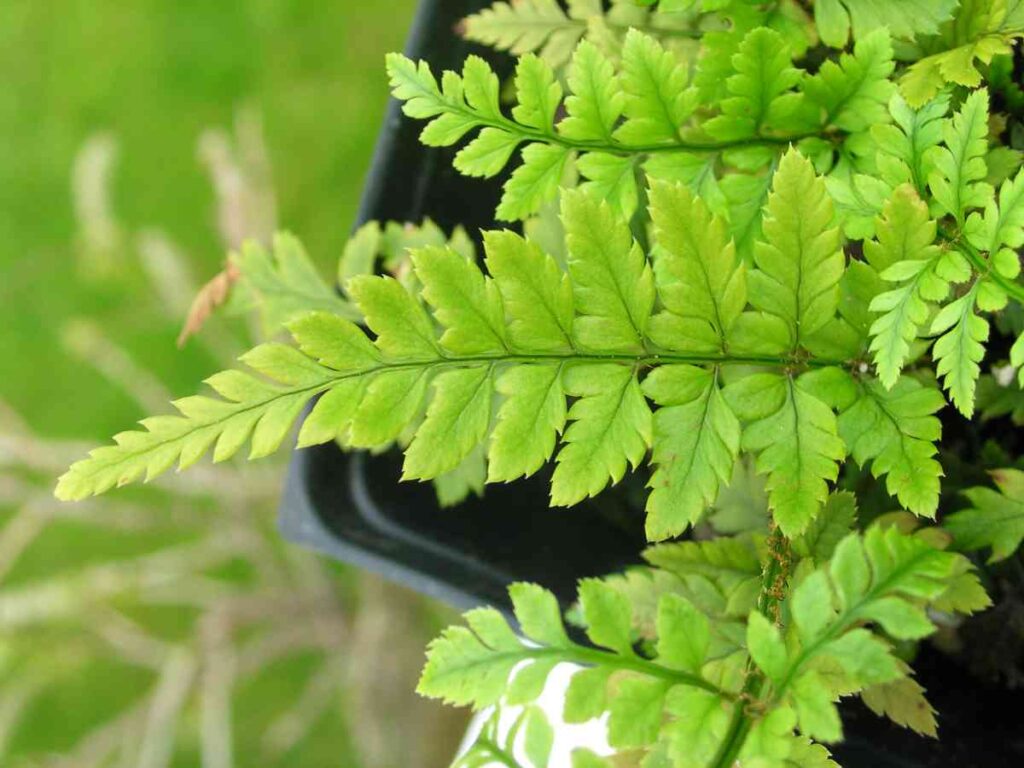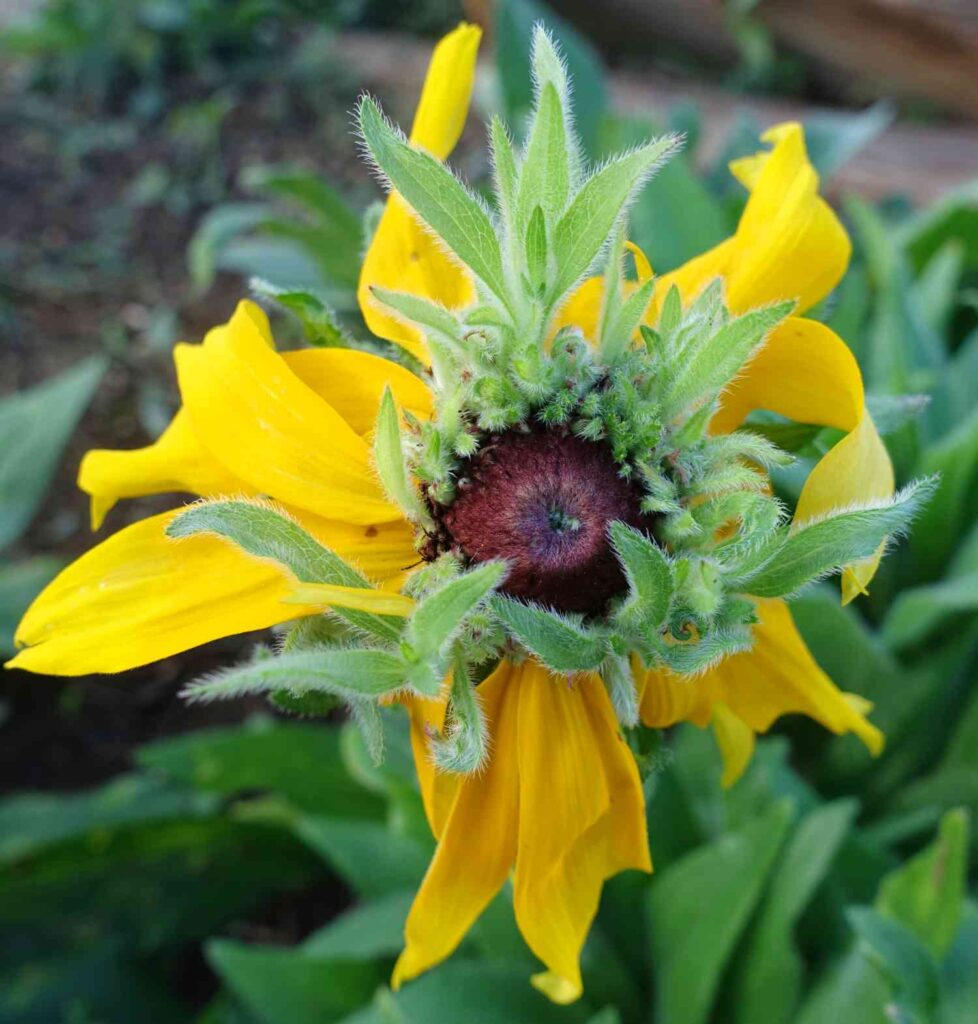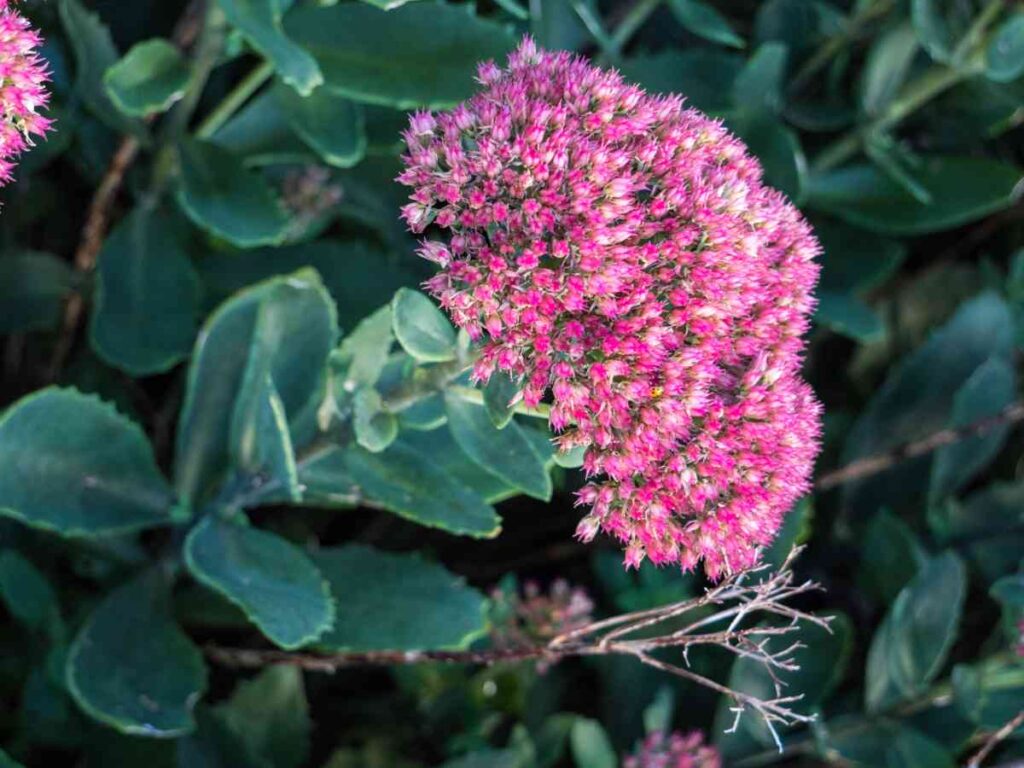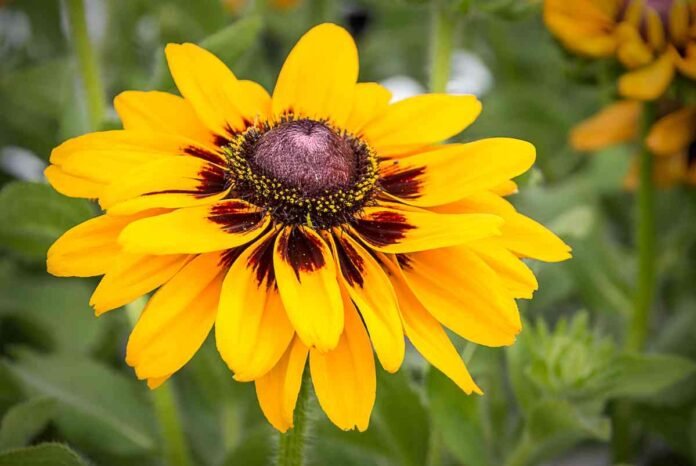August is considered as the second growing season, as the soil is still warm and the plant roots has enough time to grow stronger. Above that, your plants won’t have to tolerate extreme heat.
There are several hardy perennials that you can direct sow in August and expect to bloom through fall.
Most gardeners prefer perennials as they come back every year once established, making them cost effective.
Along with climatic conditions in your region, it is important to choose the right hardy perennials that can thrive in cool weather and continue to bloom in fall.
Russian sage, Japanese Anemones, Salvia, Purple coneflower and Black-Eyed Susan are few common perennials that can be planted in August.
Importance of Deciding Flowering Perennials to Plant in August
Choosing the right perennial variety is absolutely crucial for August planting success, as it directly impacts plant establishment, winter survival, and future growth performance.
The variety determines critical factors like cold hardiness for your specific USDA zone, mature size for proper spacing, bloom time for seasonal interest, and soil requirements that must align with your garden conditions.
When selecting perennial varieties for August planting, prioritize cold-hardy options suited to your zone with proven track records of quick establishment, and look for compact or dwarf varieties that focus energy on root development rather than excessive top growth.
Choose varieties with staggered bloom times to ensure continuous color, and verify their mature spread to avoid overcrowding issues.
For August planting, established seedlings or small potted plants are strongly preferred over direct sowing since they have developed root systems that can quickly adapt to transplanting and establish before frost.
23 Perennial Flowers to Plant in August
Strategic August planting capitalizes on the seasonal transition when soil warmth promotes rapid root growth while decreasing daylight hours signal plants to focus their energy on establishing strong foundations rather than producing excessive foliage.
Below listed are such common perennials, check them out.
1. Russian Sage

Russian sage features silvery-gray foliage and tall spikes of lavender-purple flowers, creating a soft, airy effect in the garden. Its aromatic leaves shimmer in sunlight, and the blooms add movement and texture to borders and mass plantings.
This hardy perennial thrives in full sun and well-drained soil, tolerating poor, rocky, or alkaline conditions once established.
Plant in spring after frost, spacing 2–3 feet apart. Water regularly during the first year to establish roots, then reduce watering as the plant becomes drought-tolerant and low-maintenance.
2. Holly Fern


Holly ferns feature dark green, glossy fronds with holly-like leaflets and a soft texture, forming elegant, arching clumps that provide year-round structure in shaded gardens. These evergreen perennials thrive in rich, moist, well-drained soil and prefer partial to full shade.
Once established, they tolerate short droughts and adapt well to woodland settings or shady borders. Plant in spring in humus-rich soil, spacing 2–3 feet apart.
Water regularly during establishment, then maintain consistent moisture to support healthy growth and attractive frond development.
Also Read: 23 Best Perennials that Grow in Shade
3. New England Aster


New England asters burst into bloom in late summer and fall with masses of purple-pink daisy-like flowers and golden centers. Growing 3–6 feet tall, they add bold vertical interest and attract bees and butterflies.
These hardy natives thrive in full sun and moist, well-drained soil, tolerating clay, short droughts, and tough roadside spots across zones 4–8.
Plant in spring or early fall, spacing 2–3 feet apart. Water during establishment, then pinch stems by half in early summer to encourage bushier growth and reduce flopping.
4. Bluebeard


Bluebeard produces airy clusters of cornflower-blue blooms atop fragrant, silvery-green foliage in late summer, offering color and texture when many plants fade. This compact shrub grows 2–3 feet tall, attracting butterflies and adding late-season charm to sunny borders.
Drought-tolerant and low-maintenance, it prefers full sun and well-drained, loamy soil. In colder zones (5–9), it dies back in winter and regrows like a perennial. Plant in spring or fall, space 3 feet apart, water during establishment, and cut back in early spring for fresh growth and blooms.
5. Japanese Anemone
Japanese anemones offer delicate pink or white flowers with golden centers from late summer to fall, rising on tall stems above dark green, lobed foliage.
Reaching 2–4 feet, they naturalize beautifully in partial shade. These perennials thrive in rich, moist, well-draining soil with morning sun and afternoon shade. Plant in spring, spacing 2 feet apart, and mulch to retain moisture.
Water regularly during the growing season and divide clumps every 1–2 years to control spread and maintain plant health.
6. Black-Eyed Susan


Black-eyed Susans produce golden-yellow daisy-like blooms with dark centers from summer to fall, reaching 2–3 feet tall. Their sturdy stems and coarse green foliage attract butterflies, bees, and birds like goldfinches.
Thriving in full sun to part shade, they adapt to various soils, resist deer, and tolerate drought once established. Plant in spring, spacing 11 inches apart.
Water regularly during the first season; reduce watering afterward as plants self-seed and become low-maintenance perennials with excellent heat tolerance.
Also Read: 17 Shade Loving Perennials to Beautify your Garden
7. Purple Coneflower


Purple coneflowers feature drooping purple-pink petals and spiky bronze-orange centers, attracting pollinators and birds.
These 3–5 ft. tall natives thrive in full sun and lean, well-drained soil, tolerating drought, heat, and poor conditions (zones 3–9). Plant in spring, space 18 inches apart, water sparingly, and divide clumps every 3–4 years in fall to maintain vigor.
8. Daylilies


Daylilies produce vibrant, trumpet-shaped blooms in shades from gold to burgundy, each lasting a day but blooming for weeks. Their arching, grass-like foliage forms lush clumps that thrive in full sun or part shade.
Adaptable to various soils, they prefer well-drained, slightly acidic conditions. Plant in spring or fall, 2–3 feet apart. Water regularly during year one, then reduce as they naturalize and spread.
9. Coreopsis


Coreopsis offers bright, daisy-like flowers in yellows, oranges, and bicolors from early summer to fall. Its fine-textured foliage forms neat mounds that attract butterflies and make great cut flowers.
Thriving in full sun and well-drained, lean soils, it’s drought-tolerant and low-maintenance. Plant after frost, 12–20 inches apart. Water during establishment, then let dry conditions encourage self-seeding.
10. Hardy Chrysanthemum


Hardy chrysanthemums bloom in vibrant fall colors—yellow, rust, maroon, purple, and white—offering late-season beauty when other flowers fade. Their aromatic, gray-green foliage forms sturdy mounds that support masses of daisy-like flowers.
These perennials thrive in full sun to light shade and moist, well-drained soil. Plant in spring or early summer, spacing 18–24 inches apart.
Water regularly during establishment, fertilize in spring, and pinch stems in early summer to promote bushy growth and abundant blooms by fall.
Also Read: 19 Plants that Have Heart Shaped Leaves
11. Autumn Joy Stonecrop


Autumn Joy stonecrop produces pink blooms that deepen to rose-red, then bronze in fall, offering long-lasting seasonal interest.
Thick, gray-green foliage and upright stems form tidy clumps. This drought-tolerant succulent thrives in full sun and lean, well-drained soil. Plant in spring, 18–24 inches apart. Water sparingly, avoiding rich soils or overwatering to prevent rot.
12. Dahlia


Dahlias offer dazzling blooms from late summer to frost in colors from red and pink to bicolored varieties. Their upright stems and lush foliage make them a favorite for cutting gardens and pollinators.
Plant tubers in spring, 18 inches apart and 4–6 inches deep. Use rich, well-drained soil and provide consistent moisture during growth. Avoid watering until shoots appear, and feed regularly. They need full sun and frost protection in cold climates.
13. Helenium


Helenium brings warm autumn hues—gold, red, orange—to borders from mid-summer to late fall. Its daisy-like flowers attract bees and butterflies. This sun-loving perennial prefers moist, fertile soil with good drainage.
Plant in spring or fall, spacing 2–3 feet apart. Water regularly and mulch during dry spells. Staking may be needed in rainy areas to support tall, upright growth and prolific flowering.
14. Blanket Flower (Gaillardia)


Blanket flower delivers vivid red, orange, and yellow blooms from spring to fall. Its low mounding form and drought tolerance suit poor, sandy soils.
Plant in full sun, spacing 12–18 inches apart. Water during establishment, then sparingly. Overly rich or wet soils can reduce flowering and plant health.
15. Shasta Daisy


Shasta daisies bloom with classic white petals and yellow centers from summer to fall. These hardy perennials reach up to 4 feet tall and are deer-resistant.
Plant in full sun or light shade in well-drained, organic soil, spacing 1–2 feet apart. Water regularly during establishment and maintain moisture during dry spells. They make excellent cut flowers and attract butterflies to the garden.
16. Yarrow


Yarrow features flat flower clusters in white, yellow, pink, and red atop fragrant, fern-like foliage. This tough perennial thrives in full sun and lean, dry soils, tolerating drought and poor conditions.
Plant in spring, 12–18 inches apart. Water lightly to establish, then sparingly, as too much moisture or fertility causes floppiness and reduced flowering.
17. Bee Balm (Monarda)


Bee balm produces bright, spiky blooms in red, pink, purple, or white that attract hummingbirds, bees, and butterflies.
Its minty foliage also repels mosquitoes. This tall perennial prefers full sun to part shade and rich, moist, compost-enriched soil. Space 24–28 inches apart in spring.
Water regularly to maintain moisture and prevent stress. Provide good airflow to reduce mildew risk and divide every 3–4 years to keep plants vigorous and prevent center die-out.
18. Turtlehead (Chelone)
Turtlehead blooms from July to October with snapdragon-like flowers in pink, purple, or white. Glossy foliage and upright growth make it ideal for moist areas like pond edges. It thrives in rich, consistently wet soil in sun or part shade.
Space 18–24 inches apart in spring. Keep soil evenly moist and divide every few years to control spread and encourage strong flowering.
19. Sedum


Sedums range from low groundcovers to upright succulents with fleshy leaves and clustered starry blooms.
Perfect for dry, poor, or rocky soils, they love full sun and need excellent drainage. Plant in spring with minimal watering. Avoid rich soil, which can lead to weak growth or rot.
20. Heuchera (Coral Bells)


Heuchera offers colorful foliage in purple, silver, chartreuse, and more, topped by delicate flower spikes that attract pollinators.
This compact perennial thrives in partial shade but adapts to sun or shade. Plant in spring, 12–18 inches apart in well-drained, humus-rich soil.
Maintain consistent moisture without sogginess, especially in hot spells. Coral bells are excellent for edging, containers, and adding year-round interest to garden beds, with evergreen or semi-evergreen foliage depending on climate and variety.
21. Rudbeckia ‘Goldsturm’


Rudbeckia ‘Goldsturm’ blooms mid-summer to fall with golden-yellow flowers and dark centers atop compact, disease-resistant foliage. Thriving in sun and well-drained soil, it tolerates drought, clay, and heat.
Plant in spring, spacing 18–24 inches apart. Water during establishment and maintain moisture through the season. Divide every few years to prevent overcrowding and renew vigor.
22. Veronica (Speedwell)


Veronica produces vibrant flower spikes in blue, purple, or pink over neat clumps of green foliage, blooming for weeks in summer. These sun-loving perennials grow 6 inches to 4 feet tall, depending on type.
Plant in spring, 15–18 inches apart in well-drained soil. Water consistently and deadhead spent blooms to extend flowering.
They’re deer-resistant, drought-tolerant, and loved by butterflies and hummingbirds.
Also Read: What To Do With Hellebores When Finished Flowering?
23. Ligularia


Ligularia adds bold texture with its large leaves and tall yellow to orange flowers in mid-to-late summer.
It thrives in full to partial shade and consistently moist, rich soil, making it perfect for boggy spots or waterside planting.
Space plants 2–3 feet apart in spring and mulch heavily to retain moisture. Protect from afternoon sun to prevent wilting, and water regularly to support lush growth. Some varieties have dramatic foliage for added ornamental value.
Also Read: How to Grow Everlasting Sweet Peas?
Conclusion
Planting perennials in August gives your garden a head start for next spring. Warm soil and cooler nights encourage strong root development, helping plants establish before winter.
By choosing hardy, drought-tolerant, or late-blooming varieties suited to your climate, you’ll enjoy lasting color, structure, and pollinator benefits.
With a bit of planning and care, August plantings will reward you with vigorous, resilient growth in seasons to come.


Khaja Moinuddin, a computer science graduate, finds joy in gardening and homesteading. Join him on this blog as he shares his experiences in homesteading, gardening, and composting


